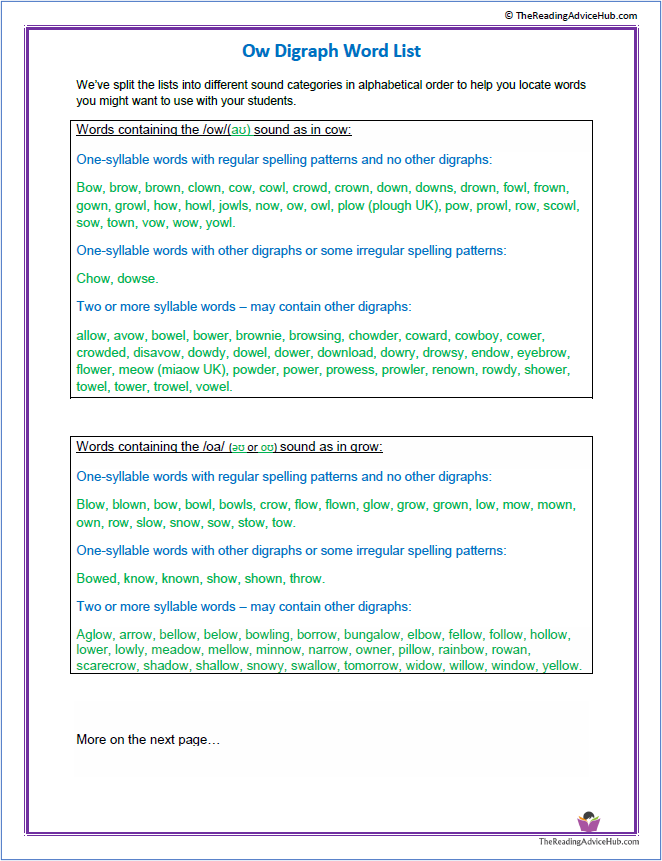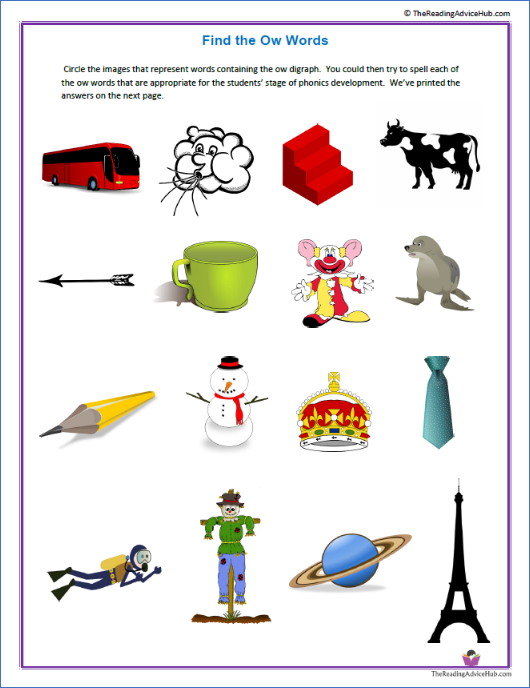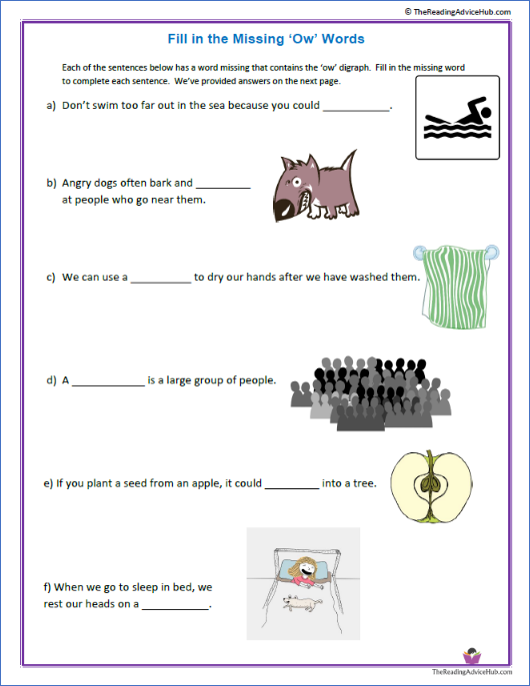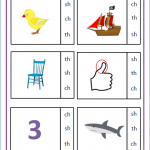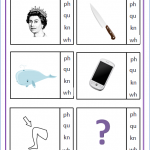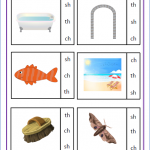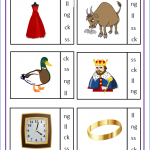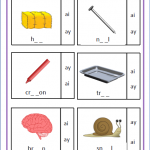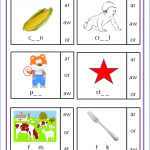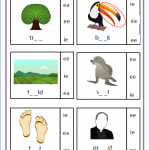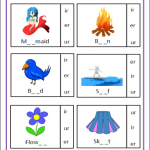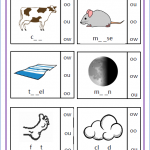Ow digraph examples, word lists, free worksheets and games for phonics teaching.
Ow Digraph Sounds
The ‘ow’ digraph is a common grapheme in written English and it’s found in a number of high-frequency words such as down, now, snow and grow.
As illustrated by the words owl and own (and the example words above), there are 2 main sounds represented by this digraph and there are a similar number of words in written English with each letter-sound correspondence.
Linguists and some teachers might describe both of these sounds as diphthongs, but this term is rarely used in schools in the UK, and many teachers there are unfamiliar with the expression.
The phoneme in the words down and now is represented by the symbol /ow/ in popular phonics programmes such as Letters and sounds and the International Phonetic Alphabet (IPA) symbol for this sound is aʊ.
A number of other letter combinations can also represent the aʊ sound. For example, ou and ough in the words cloud and drought.
The Sounds American video below explains how to pronounce this phoneme in a variety of words:
The other common sound associated with this digraph is often represented by /oa/ in phonics programmes and the phonetic symbol əʊ is sometimes used by instructors of British English, whereas oʊ might be used for American English, as illustrated in the videos below:
Other letter combinations that represent this sound include oa, o, oe, o–e, ou and ough in words such as goat, oval, go, toe, bone, soul and dough.
A few words containing the ow digraph can be pronounced with either of the above 2 phonemes because they are homographs (same spelling, different pronunciation and meaning). Examples include bow, row and sow.
The word knowledge is unusual because the ow digraph in it represents neither of the two sounds mentioned above. Instead, it represents the ‘short o’ sound (ɒ) which is normally represented by the letter o in words like hot and fox. This is a very rare exception, and we aren’t aware of any other common words with this correspondence for the ow digraph.
Teaching the Ow Digraph
Since the digraph is fairly common in children’s literature, it makes sense to teach it quite early in a phonics programme.
However, teachers don’t usually introduce digraphs until children can recognise individual letters and say the sounds they represent accurately and fluently.
It’s also helpful if children are able to blend and segment simple words such as CVC words and other one-syllable words before digraphs are taught.
The ow digraph is taught in phase 3 of the Letters and Sounds phonics programme which is broadly followed in many schools in England. This phase starts in the second half of the first term in reception when children are aged between 4 and 5 years old.
Introduce the digraph by showing children how to decode and blend some simple examples of words from the word list below and then get them to read some words for you.
Point out that there is more than one sound for the digraph and compare words with the different sounds to highlight this.
In addition to practising reading the words, they should also practise spelling them.
If children have trouble doing this, show them how to make the words with alphabet cards. Say the sounds as you put the cards down then shuffle the cards and ask them to make up the word again.
When you are demonstrating spelling these words with alphabet cards, put the two digraph letters down at the same time as you say the sound just once.
See our articles on teaching digraphs and spelling with phonics for more guidance.
You can also use some online resources to provide variety. For example, Reading Bear has several presentations that include ‘ow words’ in the orange and blue sections. These include words with both common sounds for the digraph.
The video below is useful to show children how to sound out and blend some simple words containing the sound found in words such as snow and grow…
And the video below might appeal to young children as the popular Mr Thorne teaches Geraldine the giraffe about words with the other sound found in words such as down and now:
Ow Digraph Word List
We’ve split the lists into different sound categories in alphabetical order to help you locate words you might want to use with your students.
Initially, it can help to use words that students are familiar with, but as they get more proficient, it’s good to introduce some new words to expand their vocabulary and refine their decoding skills.
Click on the following link or the image below to download a free printable pdf version of this word list.
Words containing the /ow/(aʊ) sound as in cow:
One-syllable words with regular spelling patterns and no other digraphs:
Bow, brow, brown, clown, cow, cowl, crowd, crown, down, downs, drown, fowl, frown, gown, growl, how, howl, jowls, now, ow, owl, plow (plough UK), pow, prowl, row, scowl, sow, town, vow, wow, yowl.
One-syllable words with other digraphs or some irregular spelling patterns:
Chow, dowse.
Two or more syllable words – may contain other digraphs:
Allow, avow, bowel, bower, brownie, browsing, chowder, coward, cowboy, cower, crowded, disavow, dowdy, dowel, dower, download, dowry, drowsy, endow, eyebrow, flower, meow (miaow UK), powder, power, prowess, prowler, renown, rowdy, shower, towel, tower, trowel, vowel.
Words containing the /oa/ (əʊ or oʊ) sound as in grow:
One-syllable words with regular spelling patterns and no other digraphs:
Blow, blown, bow, bowl, bowls, crow, flow, flown, glow, grow, grown, low, mow, mown, own, row, slow, snow, sow, stow, tow.
One-syllable words with other digraphs or some irregular spelling patterns:
Bowed, know, known, show, shown, throw.
Two or more syllable words – may contain other digraphs:
Aglow, arrow, bellow, below, bowling, borrow, bungalow, elbow, fellow, follow, hollow, lower, lowly, meadow, mellow, minnow, narrow, owner, pillow, rainbow, rowan, scarecrow, shadow, shallow, snowy, swallow, tomorrow, widow, willow, window, yellow.
Exception Word:
Knowledge.
The ow digraph in this word represents the ‘short o’ sound (ɒ) which is normally represented by the letter o in words like hot and fox. This is a very rare exception, and we aren’t aware of any other common words with this correspondence for the ow digraph.
Pseudo words containing the ow digraph:
Bowp, Drowg, Fowp, Gowk, Howf, Rowth, Trow, Wowp, Zowt.
Pseudo-words are sometimes described as non-words or nonsense words and they’re used in some phonics programmes and in the UK Phonics Screening Check.
These words are designed to assess whether children are capable of decoding words that are unfamiliar to them.
Normally, a pseudo-word will be presented next to an image of a monster or an alien, and the child is told that the word represents the creature’s name. The examples below are from the 2017 phonics screening check.
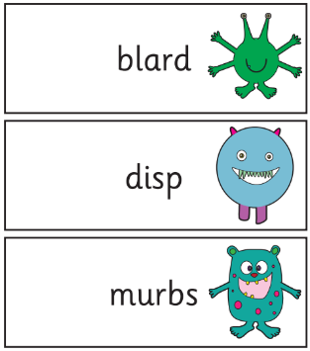
You could use some of the pseudo-words in our list as practice words for a screening check or as part of a less formal assessment of a child’s decoding ability.
Since this digraph can represent more than one sound, you can accept different pronunciations for each word.
Some of the words in the list might have a real meaning in some regions, groups, or sub-cultures, but they will be unfamiliar to most children so can be used alongside genuine pseudo-words.
Ow Digraph Worksheets
We’ve created the following worksheets that you to download for free. Click on the headings or the images below to access these resources.
Children need to decide which pictures represent words that contain the or digraph. They can also try to spell the words. We’ve also created a PowerPoint version of this resource if you want to display it to a class.
Each of the sentences on the worksheet has a word missing that contains the ‘ow’ digraph. Children need to fill in the missing word to complete each sentence. We’ve also created a PowerPoint version of this resource if you want to display it to a class.
Circle the Vowel Digraph oo, ou, ow
Circle or write in the digraph that gives the correct spelling for each picture.
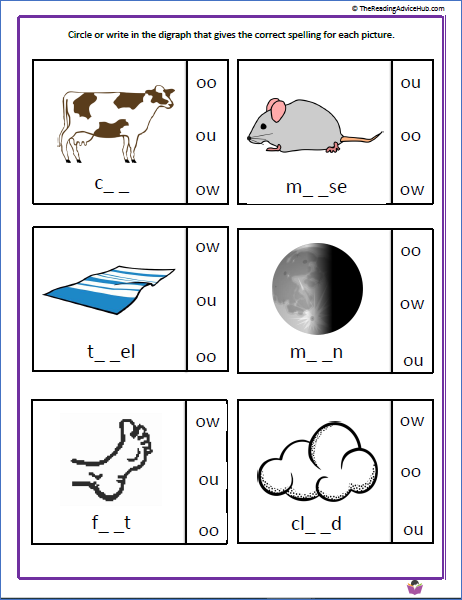
Ow Digraph Phonics Games
The spellzone website has some free games using words containing the ow digraph. They also have a variety of other games that require you to sign up and pay a subscription, but they do offer a free trial.
Click on the following link for the spell zone games:
The SplashLearn website also has some activities for practising blending and spelling ow words. You have to sign up to access all the activities but it’s free to try it.
Other Free Digraph Resources
A variety of free worksheets and other resources for a number of common digraphs.
